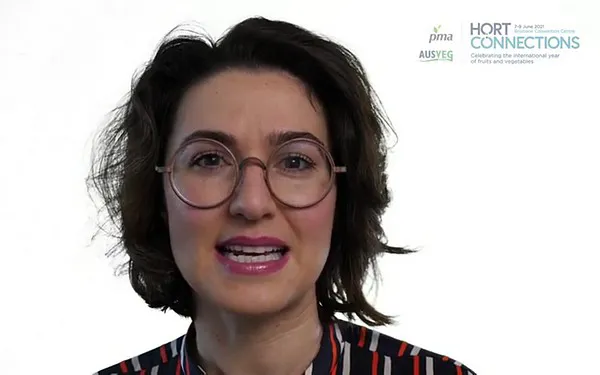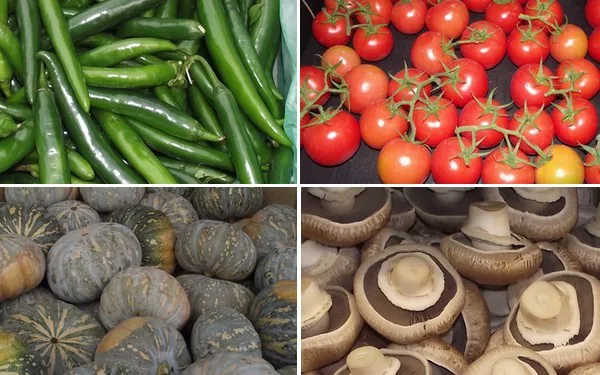One of Australia's leading food writers says growers need to connect with consumers not only to push the message surrounding their produce, but also to listen to what is important to them, as the appetite grows for healthy eating.
Alice Zaslavsky, author of the book "In Praise of Veg" says she interacts directly with consumers and has been able to develop an understanding of what drives them and their purchasing habits and behaviors. She notes that one of the biggest misconceptions in the industry is that growers and producers want to put their produce or its health benefits first - but that has actually been detrimental.
"In particular, in older generations, vegetables have got a pretty bad wrap, despite our best attempts at showing how nutritious they can be," Ms. Zaslavsky said. "Instead, that seemed to push them further and further away. What we are discovering through research is that telling people vegetables are healthy or good for them is triggering memories of their childhood of being sat around the table and not being able to leave the table until they have finished their greens, or not being allowed to have dessert. These same messages are coming through for children; the negative narrative of children being forced to eat vegetables or not liking them is something that is a hangover from an earlier time. However, what we are seeing is that we are at the precipice of a paradigm shift and, as consumer insights experts are saying, the appetite for vegetables is changing due to the pandemic. Moreover, the more we talk about health, the lower the expectation of flavor - so how do we focus on taste?"

Photo: Alice Zaslavsky giving her presentation via videolink at this year's Hort Connections
Part of an 'edible ecosystem'
Ms. Zaslavsky added that Covid-19 has also made consumers realize that they are part of an "edible ecosystem" and if they do not support local growers from the Australian industry, there may not be a sustainable system in generations to come.
"Now is the time to harness that national pride in what it is that we grow," she said. "We know that Australia grows some of the best produce in the world - that's why it's so desired by export - but now that so much more of it is inside the country, how do we help Australians connect with it? It could be a value-add, it could be in frozen foods, or dehydrated foods. So, what are you actually doing with it, apart from just packing it onto a truck and sending it off to the shops? Sustainability and healing the planet is another pain point. There are a number of grower initiatives in working with building facilities where they are utilizing renewable energy, or they are thinking about how they can value-add to their product. These two points sit together."
Trust and technology
Another factor that is paramount for consumers is building trust because going back to local fresh fruit and vegetables and having transparency, traceability and provenance is what people are seeking, especially at this time where they are not sure who to trust. Ms. Zaslavsky is also encouraging growers and producers to tell their own personal stories, to allow consumers to get a better understanding of what makes multi-generational farming families and fresh produce companies tick.
"It makes me emotional thinking about it because I know how hard and how tough their trot has been over the past few years," Ms. Zaslavsky said. "We, as consumers, feel it and want to support you, so the more that you can connect, the more of a community can be built of engaged consumers, and the more sustainable the industry can be. Consumers are excited to know things like what you are doing to enrich your soil, how you are thinking regeneratively, how you are fostering the next generation of growers. Another point to think about is technology; consumers want to see growers are utilizing current technology. Recently, I helped open a packing facility for apples that is utilizing technology in grading, storing, processing, and even getting it to the retailer. That's really exciting to me as a communicator, and as a consumer, and makes me want to support those brands that are sitting in that tech space."

Social media
Technology also creates an opportunity for direct contact with consumers through social media, according to Ms. Zaslavsky, who believes Facebook is the best platform for personal engagement, especially with the 'older generation' who have more disposable income and are becoming more health-conscious. But again, it is not just about posting information and hoping it connects, as the style of message is important and needs consideration.
"Facebook is the place where people want to connect and they want to have deeper conversations," she said. "So create those channels for people to directly connect with you. Perhaps designate a person in the company that is the voice of the business. If you are looking to connect with younger consumers, and you think you need to be on Instagram or TikTok, you need to think about how you are using those channels. I have to say that the days paying an influencer to say that your cucumbers, for example, are the best - or any other advertorial content - are numbered. That stuff is on the nose as far as consumers go. So, how are you authentically connecting with your social media platforms? One thing that I can highly recommend is creating some content around hacks and shortcuts, for example, recipes. That can be more about what value they are adding for the audience, rather than just adding a face to a brand, which is an expensive exercise that you are not going to see results through. Sometimes there's even a backlash to it."
Reducing food waste
Ms. Zaslavsky also noted that consumers are very aware of minimizing food waste, and the sentiment around reusing excess and damaged produce is growing louder, which growers cannot ignore.
"There are a number of great projects being realized through Hort Innovation and CSIRO, and through growers where food is being repurposed into things like vegetable powders," she said. "There are other growers doing things to repurpose ugly vegetables as well as Foodbanks collecting those and repurposing those for new audiences. It is also an opportunity through ugly food programs in supermarkets, which are currently grabbing so much of the market share, to expose people to fruits and vegetables that they may not feel that they have ready access to."
People are also interested in the 'novelty', and Ms. Zaslavsky says a particular trend that is running hot right now is native Australian produce, and is encouraging those who are interested in growing it to start researching how it fits into their business and strongly consider it, as demand with consumers is growing.
